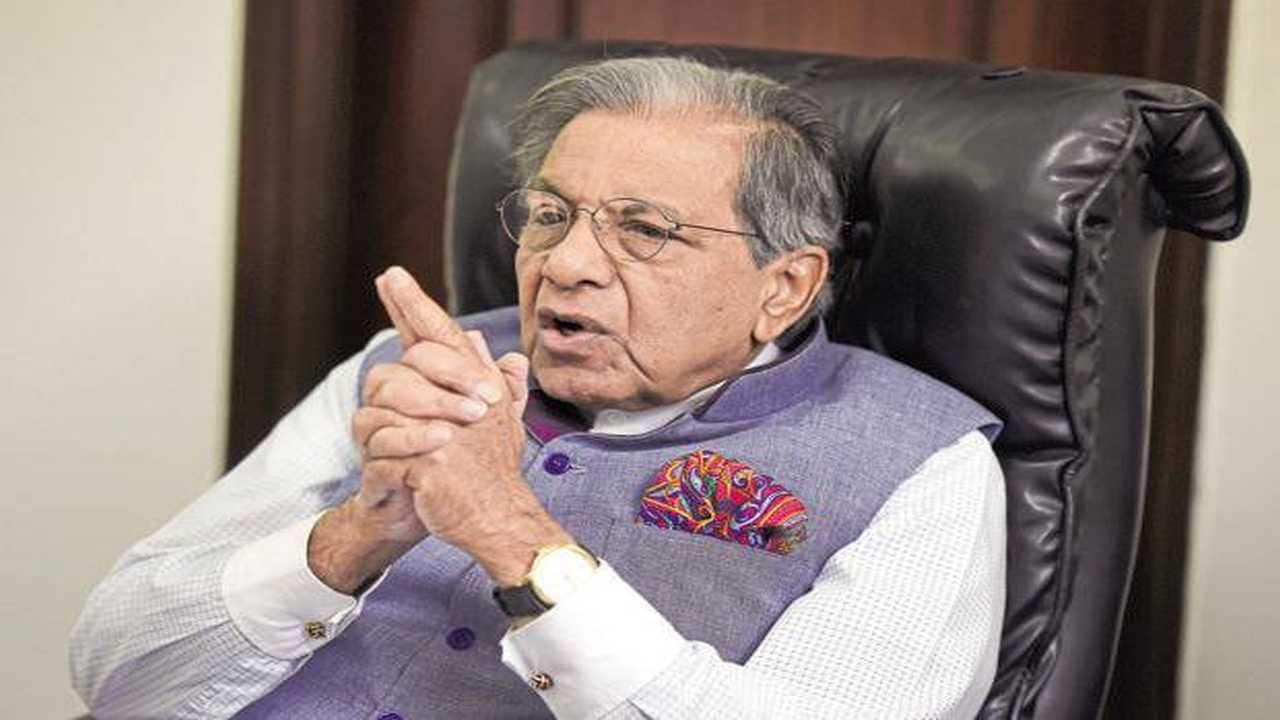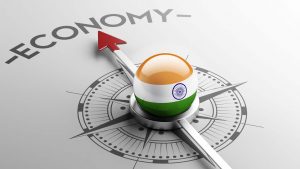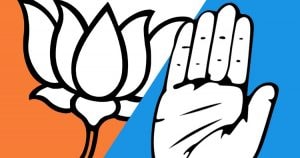YV Reddy Exclusive: Excessive dependence on US dollar rather than gold responsible for current crisis

KV Prasad Jun 13, 2022, 06:35 AM IST (Published)
 Listen to the Article (6 Minutes)
Listen to the Article (6 Minutes)
Summary
Central bankers as a group are facing some of their biggest challenges. Initially in the face of COVID, they were forced to cut interest rates, create liquidity, buy government bonds to finance large fiscal deficits. Then as inflation surged in every country they were under pressure to increase interest rates. Now the very increase in interest rates is creating financial instability problems.
Central bankers as a group are facing some of their biggest challenges. Initially in the face of COVID, they were forced to cut interest rates, create liquidity, buy government bonds to finance large fiscal deficits. Then, as inflation surged in every country, they were under pressure to increase interest rates. Now this very increase in interest rates is creating financial instability. For some emerging markets, there is the added problem of currency weakness and capital outflows when interest rates rise in the US economy.
So how should central bankers think when faced with, not dilemmas, but trilemmas? According to former Reserve Bank of India governor YV Reddy, the world’s excess dependence on US treasury bills rather than gold is responsible for the crisis.
Reddy added that solution to the problem has to be ad hoc, contextual and cannot be generalised.
Here is the edited excerpt of the interview.
Q: Let me start with the US problem. The Fed has been faced with the problem of financial instability and yet, the incomplete fight against inflation. What should be the copybook? What should a central banker do when faced with this dilemma?
A: I believe we have to think in different terms — in terms of money. It is the international monetary system which is at the origin, and not the inflation or instability as such.
In any global situation, each institution wants to avoid risk — the regulator also wants to avoid risk and ensures that no unnecessary risk is taken. So how do you handle that? You handle that by insisting prescription and make sure that you have enough risk free assets. What is risk-free asset in the world normally? It is US dollar or gold. So what happens is there is scarcity of non-risk assets or safe assets. So there has been a terrible scarcity of safe assets in the recent past.
Therefore my problem is, you better concentrate on the safe assets issue. Gold is there but other than gold, what is a safe asset? Safe asset is something whose value does not vary too much, right? The excess dependence on US treasury bills as the safest assets other than gold in the world is responsible for this.
So how do you bring about that stability and confidence is a bigger problem because the leverage word is very difficult to bring back now. So you may have to have special explicable regulatory dispensations.
I am reminded of Asian crisis time now. What we said is, we reduce the risk weight for this, you can have more risk for purpose of revaluation to enable them to have reduced capital, but it’s temporary till a particular date.
So my point is that that’s the only way now — it has to be ad hoc, it has to be contextual, it cannot be generalised. Generalised, solution is going to be more critical and more complex.
Q: So temporary regulatory sops will have to be given is what you’re saying?
A: It will have to be given to enable not-so-safe assets to be considered safe assets.
Q: Now in the current context, the US Fed has offered to underwrite the deposits of some of the troubled banks. Do you think this was the right way to go ahead with the problem that they faced?
A: It depends on the situation. But given the American situation, if they didn’t do it, the way the depositors panicked, I think it was safer to stop it, whatever the cost. I know there was so called constructive ambiguity, but even at constructive ambiguity, midnight on that day, I think ambiguity was not possible. You cannot deprive a man of his money so easily. People forget their mother and the father sooner than seizure of their money.
Q: What is your sense about the banking systems organisation itself? In Europe the number of small banks are very few. This is a problem peculiar only to the United States. So any advice on how banking systems should be organised? Were we fortunate in a way to have public sector banks? Is it good to have some part of your banking system in the public sector?
A: It’s not public or private, in real life it must be public and private but certainly not like 40 percent private, 50 percent public — that is a dangerous mix. In my view, there should be full public sector banks and there should be private sector banks coexisting.
Secondly, those public sector banks should concentrate on specific activities. Let me explain why. In banking, there is a huge incentive to smoke their activities. So therefore the regulatory information or regulatory information asymmetry given to the regulator by the regulated can be minimised by existence of public sector banks. The governance systems of the public sector banks ensure that you give reasonably good truth. For a regulator knowing the truth on a continuous basis is one of the most important things.
I feel that there are special problems and special sections and if necessary, whatever the commercial costs, the government should reimburse. But a good banking system I believe is one where at least 30 percent of the total banking system is entirely public sector and make sure that the governance is good. I mentioned this in 2000 or something like that.
Q: So let me just come to the way India has handled the problems. Our governor Shaktikanta Das has got a citation as the central banker of the world. I mean, as the best central banker for the year, and you have endorsed it. You said that he has done an outstanding job in view of the extraordinary challenges he faced and the manner in which he had to negotiate the relationship with the government. Can you elaborate a little more? This is high praise. Can you elaborate why you admire the way he handled the crisis?
A: I have written to the people who asked me from the jury, there is nothing secret. I believe he is a governor who has faced perhaps most difficult situations and not only not just international, more importantly the domestic. The type of problems he has faced, it’s impossible that he could have managed them without the cooperation of the government.
The problem with Reserve Bank of India (RBI) in the previous few years was that the government and RBI supposedly had problems. And here is a man who comes, despite all the criticism about his not being an economist and independent, comes settles down and quickly repairs the relationship with the government. Please remember one of the sentences I have written there is that he has collaborated with the government as in the case of all other countries. One of the things which people forget with independent central banks is, you must always know that when there is a crisis, you have to be with the government, you cannot be away from the government.
Also Read: YV Reddy’s criticism: Economy can’t grow just through demand creation, falling household savings a concern
Similarly, you want structural changes in the economy, you cannot amend the banking regulation. A governor cannot amend the Banking Regulation Act, without taking the government into confidence. Then how do you bring about structural changes? So my point is structural changes cannot be brought about, crisis cannot be done by the governor on his own.
Let me tell you a story, when I was governor, I tried Market Stabilisation Scheme Bonds (MSS). When I approached with MSS bonds, the minister said, no, it can’t be agreed. Chief economic advisor Ashok Lahiri opposed. I said, “Sir, I don’t want independence.” He said, “Why?” I said, “Central bank independence will be compromised.” He said, “What independence?” I don’t want independence, when there’s a huge capital flow, how can my independence help? The determination of the government and the governor that there is a serious problem that we will tackle will alone help.
Q: Let me broaden the discussion to the global situation now. There is a fight against inflation which has had to perhaps take a bit of a back seat because of the instability problems. And then separately, there are also geopolitical issues that have cropped up. What is your assessment of the global financial system? Do you think it still runs the risk of sudden collapses?
A: In fact, I think we are on very difficult ground there. I’m not very well informed, but sitting back, I have this serious discomfort because if you know in history too, one global monetary system cannot be simply replaced peacefully, it is very difficult.
Now, China is threatened and therefore this can be maybe a part of disruption. But my fear is USA could be replaced by India or China or whatever it is if it had capacities. My submission is that the US dollar is so penetrated to all instruments — virtually it is equated to trade; not just trade, it is equated to everything. Now, my point is again going back safe assets. Where do you get the safe assets? Safe asset is gold. But after gold the safe asset is US dollar. Now the problem is what happened in 2008. Remember when Korea got into trouble? They went to USA for dollars though they were in agreement with China.
So my point is, China is a long away from being recognised as the global currency. Let me ask you another question — would you like to go and settle down in China? You won’t, because if you can’t write a financial contract in China, it is not a global currency, you must ask fundamental questions.
So my fear is that there will be a continuous struggle, uncertainties for USA because of enormous accumulated weaknesses, but it will only create more problems for the world. I don’t see any way in which the US can be replaced immediately. I also heard people saying in 100 years it can be done. Maybe. 100 years is not a short time, it is a very long time.
Q: India is trying experiments of rupee trade with some countries. You think that’s at least some kind of a relief when the dollar dominance becomes too much?
A: I think there are some lessons for for ourselves and also for China in the recent years … but they will not be relevant at this juncture. But my feeling is, first of all, we should assess how many banks have availed themselves of the facility given by the government.
Also Read: Former RBI governor YV Reddy praises Shaktikanta Das – here’s why
The government says let’s go and have at it. We may be keen to do it but how many are willing to do it? How many banks are operating? I think in these matters, we have to operate at two levels — one is at the principle, philosophical and historical level, and the other is numbers — what’s happening under what circumstances. Are we giving too many concessions to the banks who are willing to do that? Why are we doing that? So I think it should be strategic value, operations and the numbers. My own feeling is that it’s not easy to jump in all these important matters that quickly. If we do I’m very happy.
Q: Let me come to the Indian situation. At this point in time do you think we are tackling the growth versus inflation dilemma properly? We have increased rates continuously. What’s your sense, do you think our growth will do well? I mean, what are we getting right? And what are we getting wrong?
A: I think in the short term, we seem to be getting many things right, particularly because the rest of the world is in serious trouble. We have our own capacities built over the years of managing shortterm troubles, so I think we are doing pretty well in the short term.
On the medium to long term, I would rather wait and see and reserve my judgment.
Q: What would your worries be? Would your worries be that the economic growth cannot proceed at this pace? Would your worries be about inequality? What broadly are the worries in the medium term?
A: At my age, I cannot afford to worry about anything. I want to be peaceful having my coffee and ice cream.
Q: Is it inequality that worries you?
A: If I had to pick up one, just one, I am slightly concerned — if not worried — about inter-state and state-Centre relations. The importance of states and the state governments, the functioning of the governments, is so critical to the people at large. I am a little worried where this will go.
Q: Well, for the Indian banking system itself, is there any word of advice to the Reserve Bank of India? Do you think they’ve done a good job in terms of regulation? We have not had the problems that others have had.
A: I am quite happy with the cleaning up of the RBI balancesheet that Shaktikanta Das and company have done. I think I’m quite comfortable with the overall framework. But the point is when the result comes, you are writing off 90 percent, the fellow who is taking is only going to take 10 percent. So was there something wrong in the original valuation or something wrong in the new valuation?
I don’t think in other countries the bankruptcy process results in realisation of 5 percent of the value. I don’t know the statistics, I have been out of touch, but if I were in the RBI, the first thing I would do is, I would collect information about the realisation in all important countries. Find out what is the realisation and why — are we below or are we above? That will give me comfort as regards to the working of the legislation, otherwise not. And how quickly we do that, how quickly and how much, I think that’s the only thing.
Q: Just a final question on the growth, inflation balance. Any advice to the Reserve Bank of India or the Monetary Policy Committee? Do you think the stress that inflation should be brought down towards four percent is the right angle that the RBI should take?
A: I’m not fully aware of the whole picture, but recently I was seeing mails which were being exchanged between top economists in the government. There seem to be a feeling that the economies can grow basically by stimulating demand. But my fear is I think we are neglecting the savings part. That’s neglected because household savings are taken as a residual in some theory. My submission is the character of household savings, don’t underestimate their importance. If we don’t have enough household financial savings, there is no financier to cover your investment.
And second, if you go on having negative interest rate for 10 years to stimulate demand, where is the money for investment? Today, because of the peculiar circumstances, you may have a moderate current account deficit. Imagine a normal graph. On a normal graph, it is very difficult to sustain this type of deficit.
Also Read: RBI’s Shaktikanta Das named Governor of the Year at Central Banking Awards 2023
So I would say as the Government of India and the state governments are emphasising — attend to productivity, to quality of education and also to household savings. Just digitisation will not induce productivity. Digitisation will, but only if it’s added to education and to quality of productivity. Productivity, education, digitisation together, not one. We are almost on a devil’s playground there.

Elon Musk forms several ‘X Holdings’ companies to fund potential Twitter buyout
3 Mins Read
Thursday’s filing dispelled some doubts, though Musk still has work to do. He and his advisers will spend the coming days vetting potential investors for the equity portion of his offer, according to people familiar with the matter

KV Prasad Journo follow politics, process in Parliament and US Congress. Former Congressional APSA-Fulbright Fellow









 Listen to the Article
Listen to the Article 
 Daily Newsletter
Daily Newsletter
















